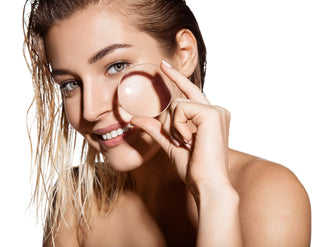Imagine how perfect our skin and hair would be if pure brainpower could control the follicles. Unfortunately, we cannot control the follicle and rate of hair growth, which is why waxing is a viable service for men and women who like to keep their pubic hair neat and shaped. It feels cleaner and is more easily managed. It can be less painful and significantly less expensive than laser hair removal. You have the option to remove as much as you like, and if you opt for the brazilian wax, there's no need to color or tweeze grey hair. Ultimately, waxing is fashionable, practical and affordable. The only drawback is ingrown hair.
Bikini and brazilian waxes are very common procedures at the Skin Rejuvenation Clinique, and we have national recognition as leaders in waxing education through Advanced Rejuvenating Concepts' Brazilian Bootcamp. Here's a few tips we've developed over the years to help keep your bikini line smooth and flawless in every season.
1. Be Sanitary
Bacteria entering the follicle is the #1 cause of pustules and cysts. Your therapist should cleanse your skin prior to waxing and finish your wax with a light application of tea tree oil. This natural oil has antimicrobial benefits that may prevent infection of the follicle.
For 24 to 48 hours after your bikini/brazilian wax, limit your potential exposure to bacterial infection. This includes the gym, hot tub, sauna, pool and public restroom. Although they are a thing of the past, tanning beds are also a big no-no for bacteria and skin health and age prevention.
2. Keep it Loose
Tight clothing can contribute to ingrown hair development. The fabric presses against your skin and encourages the hair to grow inward. On the day of your waxing service, wear loose clothing that gives your skin the opportunity to breathe and repair. If ingrown hair is a chronic problem, you may need to opt for trimming instead of waxing or shaving.
3. Exfoliate
Exfoliating two to three times per week with a manual scrub and/or hydroxy acid complex can prevent cellular buildup that blocks the follicle opening and prevents the hair shaft from exiting to the skin surface. It also removes dull dehydrated skin cells and encourages a more youthful and hydrated glow to your skin.
4. Moisturize
Regular use of a moisturizer that has a high concentration of humectants to help draw in moisture may keep the skin supple and ease the growth of the hair out of the follicle. Some examples of humectants include, hyaluronic acid, ceramides, glycerin, propylene glycol and butylene glycol. Some ancillary ingredients to help improve the skin after hair removal include tea tree oil to help minimize bacteria, hemp oil to assist with healing and repair, and retinyl palmitate or retinol to promote healthy cell regeneration and desquamation.
5. Extractions
In most cases, you can help the hair out of the follicle with a little help from a tweezer. However, if extraction of a follicle involves breaking skin or infection (cyst or pustule) you should schedule an extraction service with your aesthetician. Improper extractions can make an infection worse, scar the skin surface or cause post-inflammatory hyperpigmentation (redness around the lesion).
Ingrown hair is unsightly and can be painful if the follicle is infected. Correcting the problem is only achieved by allowing the hair to grow or to trim instead of shave. If you want a more permanent option, look at investing in electrolysis, intense pulsed light (IPL) or laser hair removal. Otherwise, traditional means of hair removal (i.e. shaving, depilatory cream, waxing et. al.) can result in ingrown hair. No matter what type or how many ingrown hairs you experience, consult with your aesthetician or wax technician. As a professional, they are a valuable resource that can help keep your skin looking smooth and flawless after waxing.


